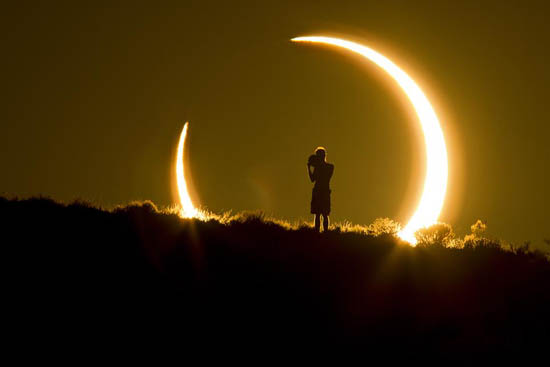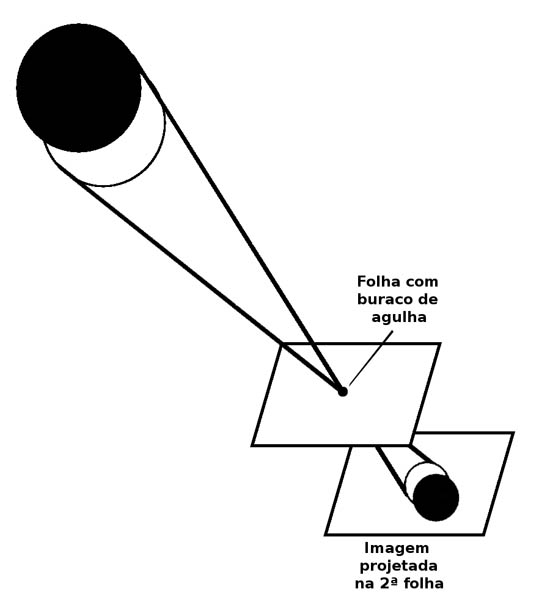 This Friday, March 20th, will take place what, seen from Portugal, will be the biggest solar eclipse of this decade. But everyone who wants to attend this event must remember that observing the Sun without proper instruments or techniques poses dangers to our eyes that can even lead to blindness.
This Friday, March 20th, will take place what, seen from Portugal, will be the biggest solar eclipse of this decade. But everyone who wants to attend this event must remember that observing the Sun without proper instruments or techniques poses dangers to our eyes that can even lead to blindness.
Therefore, we cannot resort to homemade solutions, such as the use of tinted glass, X-rays, overexposed photographic film, floppy disks or even sunglasses. And even some welder glasses may not offer sufficient protection against ultraviolet radiation, despite blocking much of the visible light. Thus, this glass must have at least a degree of opacity equal to 14 (DIN 14).
The correct approach is then to use specific filters or glasses for observing the sun, which are available in pharmacies and specialty stores.
Even with these glasses, we should limit our observation of the Sun to short periods (20 to 30 seconds) spaced apart from 3 minutes of rest, and we should not spend a total of half an hour of observation.
A more economical and safer solution is to resort to the projection method, simply using two sheets of paper or building a camera obscura.

In the first case, just take two sheets of paper or cardboard, making a hole in one of them with a needle, and projecting the light that passes through this hole on the second sheet (this effect also occurs with light that passes through somewhat dense foliage ).
As for direct observation of the Sun, using telescopes or binoculars, it can only be done using filters suitable for solar observation that are specific to these instruments. Also these filters must always be placed close to the objective and never close to the eyepiece (part where we look) of the instrument.
Alternatively, we can also project the image coming out of the telescope or binoculars onto a sheet of paper just like in the projection method.
Another safe solution is is to participate, with the various entities that, all over the country, will carry out eclipse observation sessions.
This eclipse coincides with the arrival of spring (which takes place at 22:25 on the same day 20).
As the Moon's shadow does not reach the entire surface of the planet simultaneously, in several places the eclipse has a different beginning, end or dimension. In the case of Portugal, the maximum eclipse will be reached at 07:50 am in Ponta Delgada and Angra do Heroísmo, 8:45 am in Funchal, 8:59 am in Faro, 9:01 am in Lisbon, 9:04 am in Coimbra, 9:05 am in Porto and 9:08 am in Bragança.
However, in Portugal there won't be big differences in the duration of the eclipse, which will be around two hours.
As for the extent of the eclipse, it will vary between a 57% concealment of the solar disk in Madeira, 62% in Faro, 72% in Bragança and 74% in the Azores.
Author Fernando JG Pinheiro (CITEUC)
Science in the Regional Press – Ciência Viva


















Comments